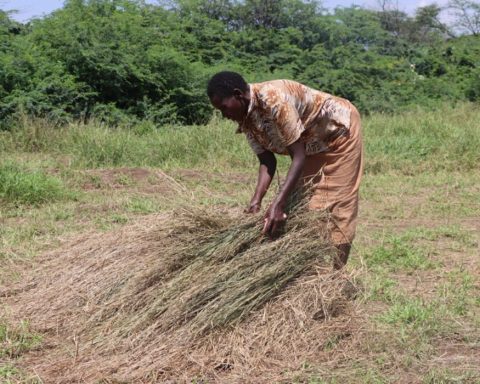There are more than seven million data centres in the world, housing servers that store massive amounts of digital information. They act as the world’s IT brain or hive, receiving and transmitting all sorts of information and enabling everyday conveniences like online shopping. But these facilities, which are notorious for their high electricity consumption and enormous carbon footprints, may soon have a new spin-off function: helping grow food.
A Canadian company called QScale is developing a $1-billion 130-acre data centre campus in Lévis, Quebec, and will use the warmth that emanates from its servers to grow more than 80,000 tonnes of produce in adjacent greenhouses every year.
Indoor farming, which is often hailed as the future of food production, is also very energy-intensive. So being able to recycle some of the heat from data centres could be a big win for both.
“Data centres consume something on the order [of] 4% of the planet’s energy. So if we could use that as a heat source, we could . . . kill two birds with one stone,” said QScale’s co-founder and head of strategy, Vincent Thibault, in an interview with Sustainable Biz Canada.
The size of data centres varies, but the largest have thousands of servers running 24 hours a day, sucking up a huge amount of electricity and giving off a lot of heat. The United States is home to the most data centres, with more than 2,600 (as of 2022). Canada has the seventh-largest number (behind the U.S., the U.K., Germany, China, the Netherlands and Australia), and those server farms use 1% of Canada’s annual electricity consumed. Just a handful of companies are behind most of the global energy used by data centres – Amazon, Microsoft, Google, Alibaba, Facebook and Apple are all among the top users (although many of these companies are trying to curb their carbon footprints by tapping into renewable energy).
Some companies and governments have taken action to make data centres less energy intensive, so that less stress is put on the electricity grids that power them. The European Commission unveiled regulations in 2019 that set up technical standards to lessen the centres’ environmental impacts. And data centres must become carbon neutral by 20230 under the European Green Deal. The U.S. Energy Act (enacted in 2021) included several initiatives aimed at making data centres more energy efficient.
QScale, for its part, says it’s trying to make data centres more sustainable. It’s trumpeted the fact that its campus in Lévis will run on 99.5% renewable sources (thanks to Quebec’s hydro-heavy grid), and its waste-heat-recovery system will help make its energy use more circular. The company will also be able to grow a decent amount of veggies. QScale says that the greenhouses on its Lévis campus will be able to produce 2,800 tonnes of small fruit a nd 80,000 tonnes of tomatoes per year.
Farming isn’t the only innovative solution to recycle all the heat waste that data centres generate. Last year, Microsoft announced that two of its data centres in Finland would heat homes and businesses in Helsinki. A Swiss IT company called GIB-Services is heating a public swimming pool in Zurich from a data centre that was built in an old military bunker.
QScale expects its heat recovery system to be up and running at its Lévis campus in early 2024. The company says part of its mission is to set an example for the industry so that other firms will follow.
“I think by giving the example that it can be done, we can force the Google[s], Amazon[s] [and] Microsofts of the world to put some effort into actually reusing all the heat that’s generated by those facilities,” said Thibault.







